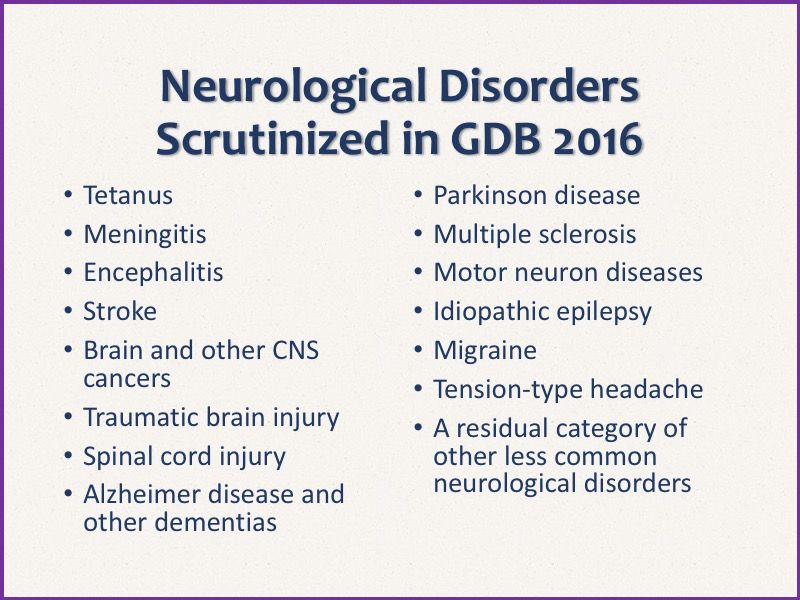Neurological Disorders in Adults
They are diseases of the central and peripheral nervous systems; they affect the brain, spinal cord, and the multiple nervous connections between them. Some of the most commonly occurring disorders are epilepsy, Alzheimer’s, migraine, strokes, brain tumors, multiple sclerosis, disorders caused by head injuries, and the ones caused by malnutrition. Read More
Top Doctors For Neurological Disorders in Adults Treatments
Top Hospitals For Neurological Disorders in Adults Treatments
Neurological Disorders in Adults
Table of contents
What are Neurological Disorders?
They are diseases of the central and peripheral nervous systems; they affect the brain, spinal cord, and the multiple nervous connections between them. Some of the most commonly occurring disorders are epilepsy, Alzheimer’s, migraine, strokes, brain tumors, multiple sclerosis, disorders caused by head injuries, and the ones caused by malnutrition. Millions of people suffer from neurological disorders, and millions die from them. In addition, the nervous system can also be damaged by bacterial infections such as meningitis, viral infections like HIV, fungal infections like Cryptococcus, and parasitic infections like malaria.
How does one know that they have neurological disorders?

Recognizing and understanding neurological disorders’ symptoms is crucial to seek early medical attention. Proper early diagnosis and effective treatment can be important in stopping further irreparable damage to the neurological system. Some of the most commonly experienced symptoms of neurological disorders include:
Headaches – it is one of the most common symptoms of neurological disorders. It can occur in different types, like migraines, tension headaches, and cluster headaches. When these headaches reoccur constantly, it is a warning sign, and medical attention should be sought. A headache can be a sign of an underlying condition like tumors, high blood pressure, infections, etc.
Stroke – this happens when the arterial supply to the brain is damaged, leading to the brain becoming impaired due to lack of blood supply. Some signs which may indicate that a stroke is about to occur include blurred vision, dizziness, numbness of the face, numbness of the arm or leg, trouble speaking, severe headache, etc.
Seizures – these occur when there are variations or changes in the normal brain’s electrical activity. The signs can vary depending on the severity of the seizure. Still, some of the signs include temporary confusion, uncontrolled jerking movements of the body, loss of consciousness, unexplained fear or anxiety, etc.
Dementia – this is a broad diagnosis used to describe a wide group of diseases that may cause brain failure. It leads to the loss of brain tissue and progresses with age. Dementia affects normal mind functions like thinking, memory or ability to remember, emotions, perceptions, thinking, etc.
Parkinson’s disease – It is a progressive nervous system disorder that affects body movement. It generally begins affecting individuals by the time they clock 60. The symptoms get progressively worse over time. Some of the common symptoms of this disease include:
- Tremor – it usually starts in the hands and fingers.
- Muscle stiffness – it occurs in the body, making it difficult for normal movement of the limbs.
- Stiffness of the face – seen especially in the early stages of the disease, the individual has difficulty in making expressions with their face.
- Speech difficulties – the individual’s speech may become slurred or soft.
- Reduced sense of smell – most people with Parkinson’s disease experience some loss of smell
Recognizing these signs and seeking medical attention is crucial in diagnosing neurological problems and plotting a treatment plan. Living with an undiagnosed neurological disorder is difficult for the individual and their loved ones.
What are the most common neurological disorders that exist and their risk factors?
Hundreds of neurological conditions exist, maybe even more; these disorders range in severity and symptoms. The symptoms can even differ from one individual to the next, some cause more severe symptoms than others, but any issue that affects the brain is bound to be an issue. Treatment plans exist that help individuals with these conditions get better, manage their disorders, and improve their general quality of life. Some of the most common neurological disorders include:
Epilepsy – this is a type of neurological disorder characterized by the abnormal electrical activity of the brain, which often leads to seizures in the individual. There are different types of seizures that a person who has epilepsy can experience.
Stroke – occurs when the blood supply to the brain is diminished. When the brain doesn’t receive this blood supply, it damages the brain. Some of the factors that predispose an individual to a stroke include:
- High blood pressure,
- high cholesterol,
- age,
- alcohol abuse,
- smoking,
- family history of stroke,
- diabetes,
- lack of exercise,
- poor diet,
- previous history of stroke etc.
Multiple sclerosis – this is an autoimmune disease that affects the sheathing of nerve cells in the body. When this sheath is destroyed, the nerve function is affected, leading to the disease condition. Some of the risk factors include:
- smoking,
- living in an area with less than adequate sunlight,
- early exposure to Chlamydia, other viruses, and bacteria.
Parkinson’s disease – it is a motor system disorder, and a loss of dopamine-producing brain cells marks it. This condition leads to impaired balance and coordination. Some of the risk factors include:
- exposure to neurotoxins,
- possessing some genetic mutations,
- exposure to harmful chemicals like insecticides etc
Alzheimer’s and Dementia – They are quite common; they affect an individual’s memory and ability to think. Alzheimer’s is associated with the aging process, and there is no cure for it, though some therapies can help to manage the condition and improve the person’s quality of life.
How are neurological disorders diagnosed?

The health care provider will enquire about the individual’s medical history, family history, medication history, and experienced symptoms. They will also conduct a neurological examination that will test the individual’s coordination, balance, sensation, vision, hearing, speech, muscle strength, and mental health. A blood test may also be ordered, as well as urine or other bodily fluids. Some further tests that can be ordered to diagnose the type of neurological disorder further include:
- Angiography – visualizes the blood vessels in the brain, head, or neck. It can detect blocked vessels, aneurysms, and blood clots in those vessels.
- Biopsy – this is the removal of tissue for laboratory testing and examination. A muscle, brain, or nerve tissue may be taken.
- Cerebrospinal fluid analysis – this involves the removal of a sample of the fluid that surrounds the brain and spinal cord. It can detect various abnormalities like infections, metabolic diseases, etc.
- Diagnostic imaging – tests can include CT scan, MRI, ultrasound, X-rays, etc.
- Electromyography is a test that measures the muscles’ electrical activity. It is used in diagnosing nerve, muscle, and spinal disorders.
- Electroencephalography – this test aids in measuring the electrical activity of the brain. It is used to help diagnose abnormalities like seizures, brain injuries, and tumors.
- Electronystagmography – this is used to diagnose involuntary eye movement, dizziness, and balance disorders.
- Evoked potentials – it is used to measure how quickly electrical signals reach the brain from the ears, eyes, or skin touches. This test can help detect multiple sclerosis, spinal cord injury, etc.
- Myelography – it helps in diagnosing spinal tumors, spinal cord tumors, herniated discs, and fractures.
- Positron emission tomography (PET) scan – it is an imaging scan that is used to evaluate epilepsy, brain tumors, etc.
- Thermography – It measures temperature changes within the body or specific organs. It is used to evaluate pain syndromes, nerve root compression, etc.
- Single-photon emission computed tomography (SPECT) – it is used to diagnose tumors and infections and locate the position of seizures, stress fractures, etc.
- Polysomnogram – It measures body and brain activities during sleep, thus helping to diagnose sleep disorders.
How are neurological disorders managed?
For some neurological disorders, treatment and rehabilitation can improve the condition, while in others, the prognosis is poor. Rehabilitation can be used in order to restore functions lost because of a neurological problem. Some of the therapies that exist for neurological disorders include:
- Lifestyle changes
- Physiotherapy
- Pain management
- Medication















































































